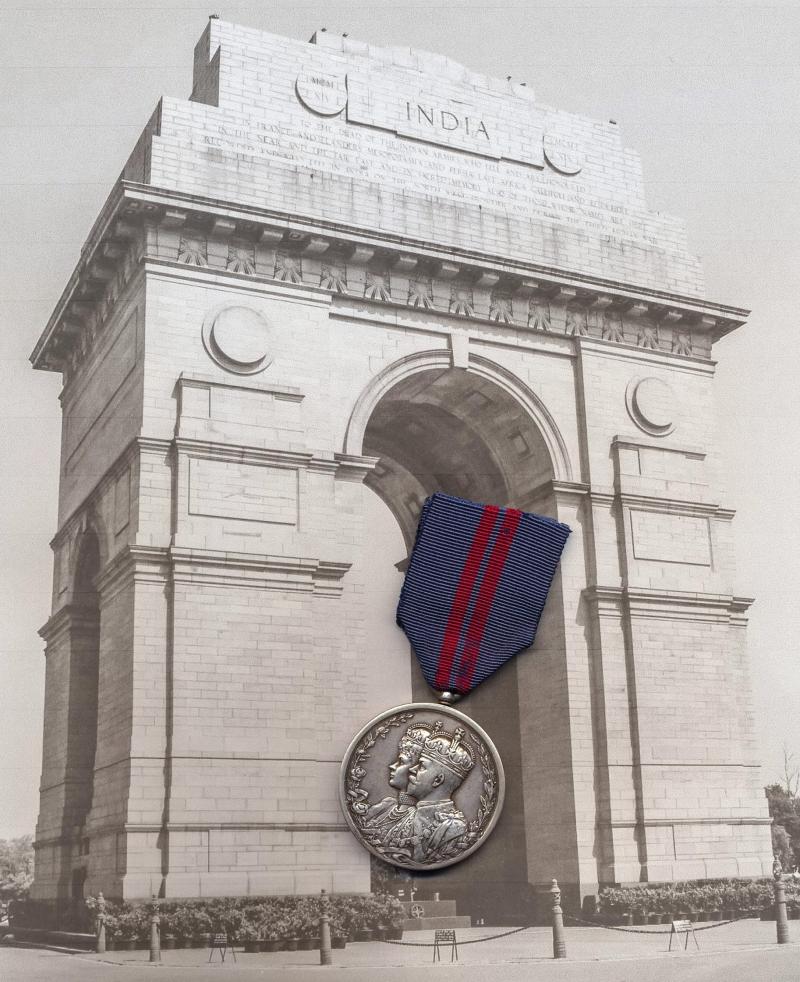Delhi Durbar Medal 1911. Silver issue. The medal contemporary engraved in Urdu/Persian script (666 Driver Gauhar Ali, 27th Mule Corps)
The recipient was a Punjabi Mussalman soldier serving as a Driver with the 27th Mule Corps of the British Indian Army
Medal verification: Confirmed on the respective Delhi Durbar 1911 medal roll of the combined 23rd & 27th Mule Corps, reference WO 100/400, in which he is shown as 666 Driver Gohar (sic) Ali
Great War Casualty: 666 Lance Naik Gauhar Ali, 27th Mule Corps, is confirmed having died in British India (West of the River Indus) on, 30 November 1916. His name & supreme sacrifice is commemorated in perpetuity by the Commonwealth War Graves Commission, upon the Delhi Memorial (India Gate), Rajpath, New Delhi India, where Gauhar Ali's name and service details are inscribed on Face 7-28, of the Delhi Memorial, what is now the site of India's national war memorial
Gauhar Ali is just one of more than 13, 200 Commonwealth servicemen commemorated by name on the memorial, just over 1,000 of whom lie in cemeteries to the west of the River Indus, where maintenance was not possible. The remainder died in fighting on, or beyond the North West Frontier and during the Third Afghan War, and have no known grave
The Delhi Memorial also acts as a national memorial to all the 70,000 soldiers of undivided India who died during the years 1914-1921, the majority of whom are commemorated by name outside the confines of India
The memorial was designed by Sir Edwin Lutyens. It was unveiled by Lord Irwin on 12 February 1931
Mule Corps: Reorganisation of the British Indian Army during the early years of the 20th Century, witnessed the emergence of a regular corps and cadres of mules, camels and cart transport. By 1905, the revamped pack and cart transport consisted of 21 x mule corps, 9 x silladar camel cadres and 2 x pony cart train cadres. A mule corps was commanded by a British officer and is divided into two subdivisions, each in charge of by a warrant officer. Those for cavalry brigades are divided into six draught and four pack troops , each under a Dafadar and have a total strength of 552 x all ranks, with 936 x mules. Those for use with other arms are divided into nine pack troops, each under a Daffadar, and have a total strength of 388 x all ranks with 840 x mules. Cadres of mule corps were under the command of a British Officer and maintain practically the full number of supervising and artificer establishments. They have, however, a much smaller number of mules
See the accompanying images for the inscriptions of the naming on the medal
A scarce instance of a British medal privately named in a native script - the more so to an Indian 'Great War Casualty' whose name was latterly inscribed on the Delhi Gate Memorial
Condition: VF
Code: 22183
195.00 GBP







